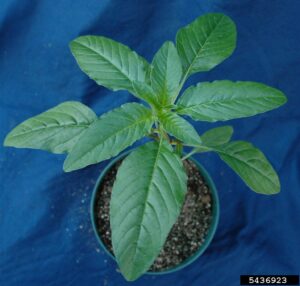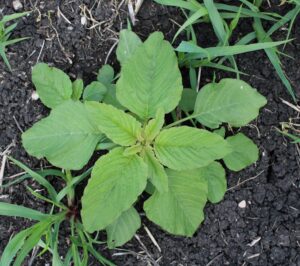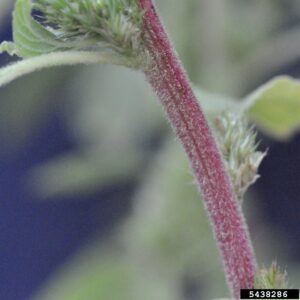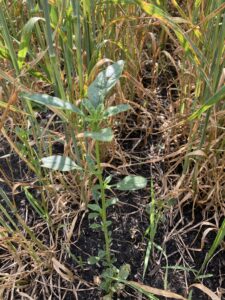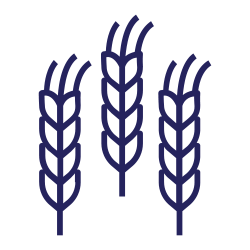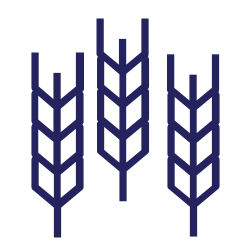Section Title
Spread of Waterhemp and Palmer Amaranth in Manitoba
Crop Types
- Whole Farm
Waterhemp and Palmer amaranth are pigweeds in the genus Amaranthus. While more common members of this genus such as redroot pigweed are familiar to Manitoba farmers, waterhemp and Palmer amaranth are new to Western Canada. Not yet identified in Saskatchewan or Alberta, both species of concern have been found in Manitoba. As of the 2023 crop season, identifications of Palmer amaranth in Manitoba remain limited to the RM of Dufferin. However, waterhemp has continued to spread throughout the province, with an increasing number of identifications in 2023.
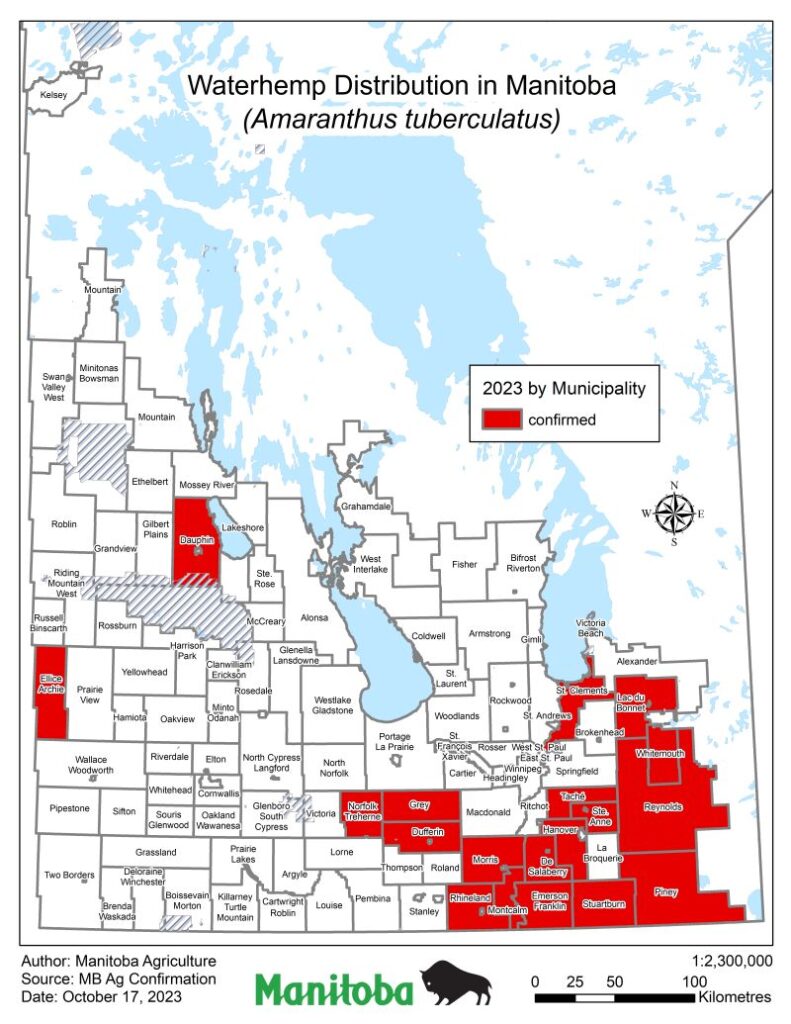
Distribution of waterhemp in Manitoba. Map indicates municipalities where waterhemp has been found, up to and including the 2023 crop season. Courtesy of Manitoba Agriculture.
Why should you be concerned?
Waterhemp and Palmer amaranth are dioecious, meaning they have separate male and female plants and must outcross to produce seed. The result is high genetic diversity and the ability to transfer herbicide resistance traits through pollen, allowing it to quickly develop resistance to herbicides. In Manitoba, populations of waterhemp have been found that are resistant to several herbicide groups, including combinations of Group 2, Group 9 and Group 14. In Ontario, waterhemp with five-way resistance (Groups 2, 5, 9, 14, 27) has been found, and in the U.S., waterhemp populations with resistance to combinations of Groups 2, 4, 5, 9, 14, 15, 27 have been detected1.
In addition to their ability to quickly develop herbicide resistance, these weeds are prolific seed producers. When there is little competition from crops, plants can producer over one million seeds. These seeds are small and can easily be transported through contaminated seed, straw and hay by equipment, spreading of manure, migratory birds and flood water2.
Under favourable conditions (warm temperatures with high sunlight intensity and nitrogen-rich soil), waterhemp can grow rapidly and up to a height of three metres. Waterhemp can germinate throughout the summer, and will continue to flower and produce seed until the first frost2.
Identification
While it's especially important to monitor for these weeds in crops that are grown in a wide row (e.g., corn, soybean, sunflower, etc.), they can also be found in more competitive cereal crops.
Both waterhemp and Palmer amaranth have smooth hairless stems, which can be a good distinguishing characteristic from other pigweeds, which tend to have hairy stems. It is important to note that in Manitoba, waterhemp and Palmer amaranth have been shown to outcross or hybridize with other pigweed species, which can make visual identification difficult. Suspicious pigweeds should be removed and identified through DNA analysis.
For more information on how to identify waterhemp and Palmer amaranth, including pictures, see the species identification guides at the end of this article.
Management
Currently, waterhemp and Palmer amaranth are designated as Tier 1 weeds under the Manitoba Noxious Weeds Act. This means that if found, they must be eradicated without conditions. If you suspect you have waterhemp or Palmer amaranth, it is essential to obtain a correct identification. Contact your local agronomist, the Manitoba Agriculture weed specialist (kim.brown@gov.mb.ca), or any of the MCA agronomy specialists. DNA testing is also available for species identification (see resources below).
Because of its rapid growth rate and tendency to develop resistance to herbicides quickly, management practices that reduce spread and increase crop competition are essential. Consider the following:
- Diverse crop rotation: including crops like wheat and barley in your rotation provide more competition than row crops. Crop rotation is also important to help facilitate rotation of herbicides.
- Use of tank mixes/multiple effective modes of action, including soil residual herbicides: in addition to preventing the development of herbicide resistance by using multiple effective modes of action, the use of soil residual herbicides can be helpful for waterhemp and Palmer amaranth due to their extended germination period.
- Narrow row spacing and increased plant population: practices that speed crop canopy closure, including increasing plant population or using narrower row spacing can be important to increase crop competition.
- Strategic tillage: due to their small seed size, most waterhemp and Palmer amaranth seedlings germinate from near the soil surface. As a result, populations can increase under no- or reduced-till systems.
- Post-spray scouting: early identification of escaped weed patches is critical. Weeds that escape control should be identified and the reason for escape determined.
These practices, along with other integrated weed management practices such as sanitation, post-spray scouting and record-keeping are essential to staying ahead of these problem weeds.
Additional resources
Species Identification Guides
- Identification, Biology and Control of Palmer Amaranth and Waterhemp in North Dakota
- Cornell University Pigweed Identification Guide
DNA Testing for Amaranth Species Identification
- Pest Surveillance Initiative (Winnipeg, MB)
- TurnKey Genomics Inc. (Guelph, ON)
References
- Heap, I. 2023. The International Herbicide-Resistant Weed Database. Available from: http://weedscience.org
- Costea M., Weaver S.E., and Tardif F.J. 2005. The biology of invasive alien plants in Canada. 3. Amaranthus tuberculatus (Moq.) Sauer var. rudis (Sauer) Costea and Tardif. Can. J. Plant Sci. 85: 507–522. Available from: https://cdnsciencepub.com/doi/pdf/10.4141/P04-101

